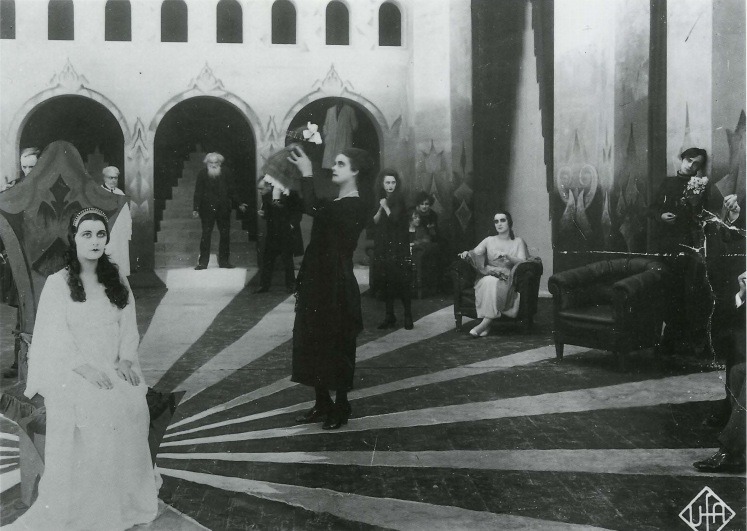The Cabinet of Dr. Caligari (1920), is considered to be
one of the most influential silent horror films to be made. Directed by Robert
Wiene, the film used quirky and strange settings and scenes to help create
ambiance and tension throughout the film to help the audience react with the
horror aspect. Although the film is in black and white, the use of different
shades and intensities of light helps to create different dynamics in the
scenes and helps to emphasise the different moods throughout the film.
‘Cagliari’s Expressionist style ultimately led to the dark shadows
and sharp angles of the film noir urban crime dramas of the 1940s’ (Erikson,2010)
 |
| Fig 1 |
Figure 1
works well to show what Hal Erikson was saying about the sets and scenes used in
the film. Wiene wanted to create a surreal yet horror related set that would
help to create and carry the tension of the film and capture the audience’s
attention; the use of jagged edges and sharp shading created an edgy and
horror-type setting. Wiene also managed to create a set that allowed them to
create some interesting camera shots, as shown in figure 1, the use of walling
and shapes helps to frame certain scenes and gives the film a certain
theatrical feel.
‘In particular, in many scenes, the shadows were actually painted onto
the set, such that, in certain scenes, the shadows lie in direct defiance of
natural lighting.’ (Merriam, 2008)
 |
| Fig 2 |
One of the
other notable aspects of the scenes and sets used in Caligari was the odd use of
shadowing that was painted onto the floors and walls of the set pieces. Much
like Julia Merriam said, they were painted in a way that was in direct defiance of
natural lighting; whilst the natural shadows were evident from lighting used
for the film, the painted shadows never wavered or changed; they created a
sense of depth to each set and exaggerated just how big the sets were to create
a much more spacious and eerie looking area.
‘Verticality is rare in Cabinet; its
buildings rest at steep angles, as though they are leaning. It’s streets wind
and weaves in organic fashion.’ (Edwards, 2010)
 |
| Fig 3 |
Figure 3 shows all the aspects of the
set design brought into one final image; the use of jagged shapes to create odd
looking buildings and create a set that would intrigue and capture the
audience’s attention whilst adding to the dynamics of the film; the use of
contrasting lights to create an almost silhouetted figure stood atop the
building to help build the tension and suspense of the film. It was Wiene’s
unique set designs and lighting structures that create a film that is still
regarded as the beginning of horror films and his influences can be seen throughout
various set designs and structures.
Review Bibliography
Quotes:
Hal Erickson (2010). In: http://www.rottentomatoes.com [online] At: http://www.rottentomatoes.com/m/1003361-cabinet_of_dr_caligari/ (Accessed on 20/9/12)
Julia Merriam (2008). In: http://classic-horror.com [online] At: http://classic-horror.com/reviews/cabinet_of_dr_caligari_1920 (Accessed on 30/9/12)
Chris Edwards (2010). In: http://silent-volume.blogspot.co.uk [online] At: - http://silent-volume.blogspot.co.uk/2010/04/cabinet-of-dr-caligari-1920.html (Accessed on 30/9/12)
Images:
Film Still 1
(Fig 1)
Film Still 2
(Fig 2) http://24.media.tumblr.com/tumblr_mayk1rZEuI1rvh840o1_1280.jpg
Film Still 3
(Fig 3) - http://i2.listal.com/image/553758/936full-the-cabinet-of-dr.-caligari-screenshot.jpg

another confident and articulate review, Katy - with a good proactive use of the illustrations. Just one stylistic tic - your refer to 'Julia' when you're referencing one of your sources, but this use of your contributor's first name jars a bit, because it suddenly introduces a note of informality and familiarity that is out of keeping with the otherwise scholarly tone of the review.
ReplyDeleteAh, thank you for pointing that out! I've just gone through and changed it
ReplyDelete